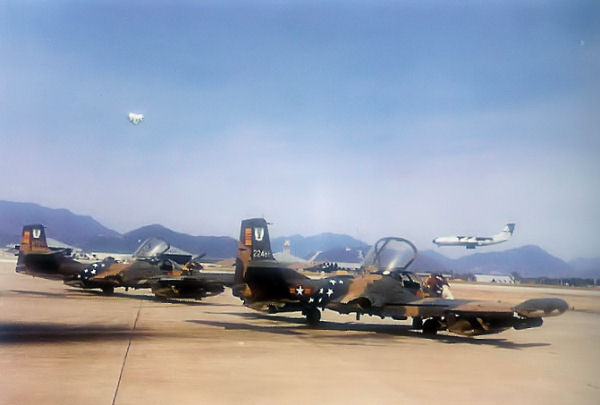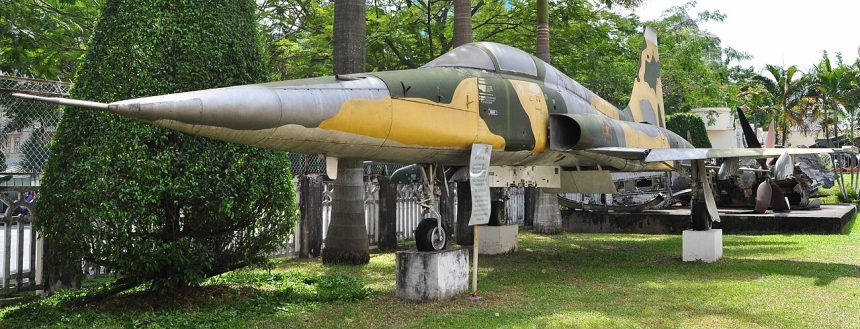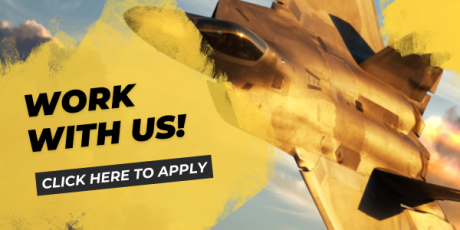Near the end of the war in Vietnam, an American-built Northrop F-5 fighter in South Vietnamese markings dropped bombs on the South Vietnamese Independence Palace shortly before the fall of Saigon.
April 8, 1975
Adding to the panic felt as North Vietnamese and Viet Cong troops moved rapidly south towards the city, a solitary Northrop F-5 fighter jet flew over the crowded streets of Saigon, South Vietnam. On-lookers were stunned as the American-built aircraft wearing South Vietnamese Air Force (VNAF) markings made bombing runs on Independence Palace (Doc Lap Palace), the home and workplace of president of South Vietnam. This was not a communist plane from North Vietnam, but one of their own. Two bombs struck the garden area on the initial attack, and two hit the helicopter pad on the roof of the building on a second bombing run. Shortly afterwards, a fuel depot at an airfield was strafed with 20 mm cannon fire from the same aircraft.
Ordered to participate in an attack on advancing enemy positions, Lieutenant Nguyen Thanh Trung had taken advantage of limited radio communications during take-off of his unit, and used hand signals to falsely indicate an electrical malfunction of his aircraft. He was signaled in return to stay back. Watching the other aircraft depart, Trung sat on the runway, the control tower unaware of the hand signals exchanged and with no radio communication, simply watched him take to the skies. This loophole allowed him to proceed without anyone recognizing his rogue plans. Trung’s aircraft was loaded with four 550 lb bombs. He would use his Northrop F-5 to perform the attack just described and land it in North Vietnamese held territory after the strike.
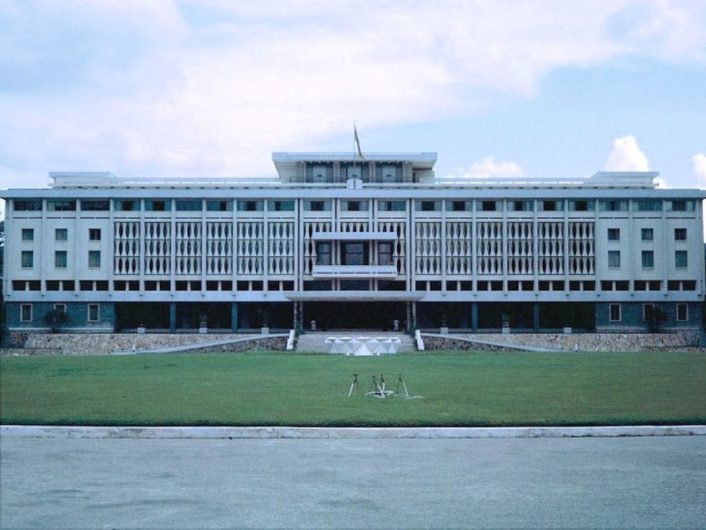
Lieutenant Trung’s Revenge
Trung was a competent and respected pilot of the South Vietnamese Air Force. He had spent two years being trained in the United States to fly American-produced aircraft being provided to the South. Prior to his military career, he had attended college in Saigon at the Saigon University of Science. Many college students were recruited at this time by the South Vietnamese Air Force, and Trung volunteered for service in 1969. But he had a secret.
The day before he was sworn in to the VNAF, he was inducted in as a member of the Communist Party. The North Vietnamese recognized the recruitment efforts of the South regarding college students, and the North recruited them as well, hoping to infiltrate the VNAF. In this case, their plan worked.
Trung had a motive for his actions, he had watched South Vietnamese commandos kill his father who was associated with the Communist Party, and arrest his mother in 1963. Trung became determined to exact revenge upon the South, he had changed his name to distance himself with his past and hide his family’s previous involvement with the Communist Party, allowing him to infiltrate the military of the South.
Throughout his time training to fly, he continually worked on a plan to bomb the palace in Saigon as revenge. While training in Texas, he was able to remain in contact with the communists and even send them information on U.S. aircraft and tactics. Eventually he was back in Vietnam, training other pilots and commanding a squadron of Cessna A-37 Dragonfly attack aircraft. In April of 1975, North Vietnamese agents determined his true identity might have been compromised, and told Trung to defect. Trung now had to find a way to put his plan of retribution into action, culminating in the events described above.
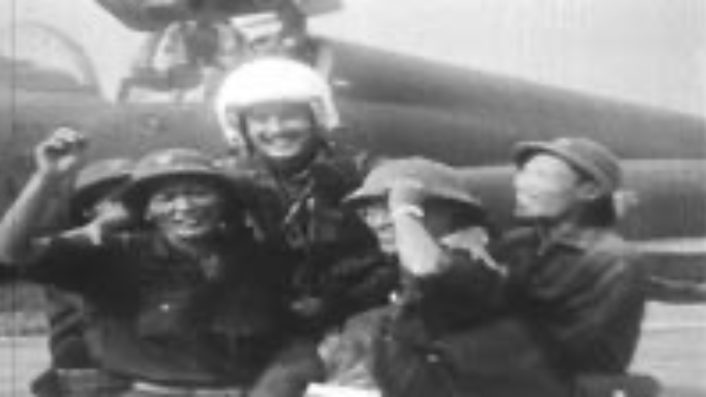
The Northrop F-5 and a Mystery
History records the aircraft used by Lt. Trung was an American-built Northrop F-5E. Currently on display on the grounds of the palace in today’s Ho Chi Minh City (Saigon) is an F-5 claimed as the aircraft used that day by Lt. Trung. However, the aircraft appears to be an earlier F-5A model. Both F-5A and F-5E models were provided to the South Vietnamese Air Force by the United States. The question is, did Lt. Trung fly the F-5A that is on display that day, and history recorded it incorrectly as an F-5E, or did the communists simply use a captured A model painted to represent Lt. Trung’s F-5E aircraft and it is not the actual aircraft he flew?
Northrop began a private venture to reverse the trend of large sized, heavy, and complex fighter design in 1954. Designed as a light-weight multi-role aircraft, it was designated the F-5A and a two-seat version the F-5B. The F-5A, knowns as the “Freedom Fighter”, had a top speed of 925 mph with a ceiling of 50,700 ft. Wingspan of the F-5A is 25 ft 3 in with a length of 47 ft 2 in, and a height of 13 ft 2 in. Power was provided by two General Electric J85-GE-13 afterburning tubojet engines. Armament consisted of two nose mounted 20 mm cannons, with a capability of carrying two AIM-9 Sidewinder air-to-air missiles (AAM) and ability to carry a variety of bombs.
Known as the “Tiger II,” the F-5E had a redesigned fuselage in order to store more fuel and to house the J85-GE-25 engines. Intakes were also redesigned, the wings enlarged, and avionics improved. Length was now 48 ft 2 in and wingspan 26 ft 8 in. Also armed with twin 20 mm cannons and having the capacity to carry two wingtip mounted AIM-9s, it had an improved ordinance load of 7,000 lb over the A model’s 6,200 lb. Widely exported and license-built, the Northrop F-5 also became known as the famous MiG-28 of the movie Top Gun.
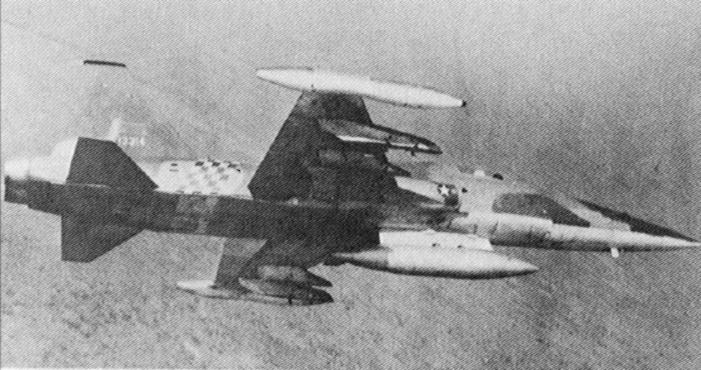
After the Attack
Lt. Trung had planned to not only bomb the palace that day, but also the United States Embassy. However, since his first two bombs missed the mark at the palace, he had to use the remaining two bombs on his second attack run on the palace. After the attack, he flew the F-5 to North Vietnamese territory and landed. Welcomed as a hero, he was made a Lt. in the Vietnam People’s Air Force (VPAF).
Trung began training North Vietnamese pilots to fly captured and abandoned aircraft from the South Vietnamese Air Force as the forces of the South continued to flee the communist onslaught. On April 28, 1975, Trung participated in an air raid on Tan Son Nhut Air Base, causing the remaining units of the South Vietnamese Air Force to flee to Thailand, and helping to end American efforts to evacuate Saigon via fixed-wing aircraft. Saigon would soon fall, and Trung would be promoted to Captain as a result of his efforts.
Trung went on to serve, flying in operations over Cambodia. In 1990 he became a civilian pilot for Vietnam Airways, flying American aircraft once again, this time passenger jets. In 2005 he flew the Vietnamese President to the United States for a diplomatic tour.
While Trung’s raid on Independence Palace caused only minor damage, the effect it had on morale was devastating, and a precursor of things to come; the fall of Saigon ensued and the war ended on April, 30, 1975, with communist tanks breaking down the gates of Independence Palace.
